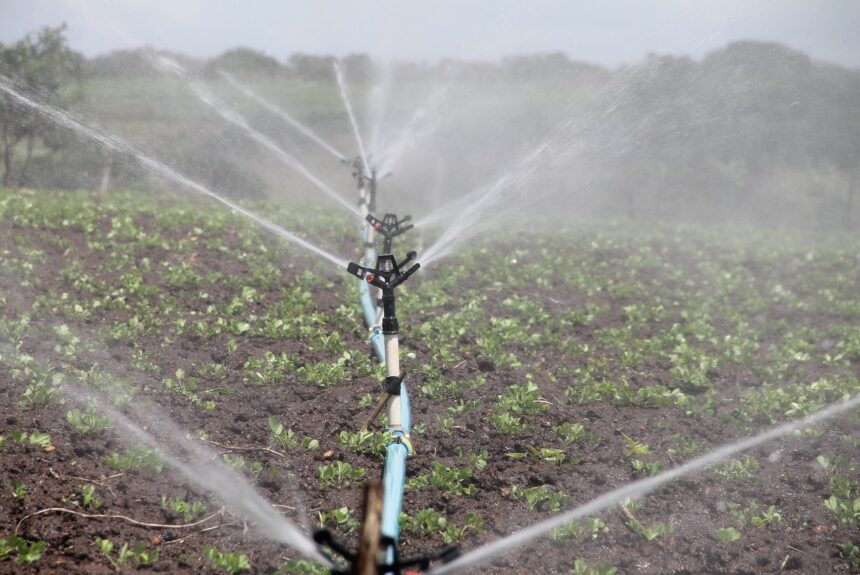As farmers look for additional revenue streams and companies and municipalities aim to reach clean energy goals, agrivolics, which pairs solar panels with agriculture, has emerged. The U.S. currently has 2.8 gigawatts of agrivoltaic sites which are predominantly located in pollinator habitats and sheep grazing fields. Recent research outlines alternative ways that farmers can expand renewable power production on their land by storing excess solar power through micro-pumped hydropower.
>>>READ: New Study: Solar Projects Do Not Lower Nearby Home Values
The University of New South Wales (UNSW Sydney) recently published a study examining how Australian farmers could use their agricultural reservoirs to produce hydropower. Farm dams are a big deal in Australia with more than 1.7 million established across the country. While numbers of American farm dams are not as well documented, we know that at least 10 percent of American cropland was irrigated using larger dam construction as of 2019, and American farmers also rely on farm dams for water.
Farm dams are built on private land to store water that is then used for agricultural purposes. The resulting reservoirs are nowhere near as large as those of industrial dams, but they also do not have to be, considering they are built to provide a fraction of the water. Here in the United States, farm dams are often referred to as irrigation or agricultural reservoirs, and “are typically a minimum of 10 feet deep, unless restricted by shallow groundwater depth, and should be large enough to hold the volume of water necessary for the operation for a specific period of time,” according to Clemson University.
While a small reservoir will not produce power at the same scale as large dams, they can be connected to other bodies of water and support micro-pumped hydropower projects. As the Australian researchers point out these small plants could be key to storing excess solar power.
“In a micro-pumped hydro energy storage system, excess solar energy from high-production periods is stored by pumping water to a high-lying reservoir, which is released back to a low-lying reservoir when more power is needed, flowing through a turbine-connected generator to create electricity,” explains a UNSW Sydney release about the study. “However, constructing new water reservoirs for micro-pumped hydro energy storage can be expensive.”
>>>READ: Data-Driven Agriculture: Why Data Collection Can Improve Conservation Programs
That is where farm dams come into play. Since these water reservoirs already exist, new micro-hydropower plants could be built at a fraction of the cost. Couple that with the falling price of solar, and American farmers could have a new way to generate and store renewable energy generation on their property.
But why choose micro-pumped hydropower as a storage system? “While the initial outlay for a micro-pumped hydro energy storage system is higher than a battery, the advantages are larger storage capacity and potential durability for decades,” explains Dr Nicholas Gilmore, lead author of the study and engineering lecturer at UNSW Sydney. “But that cost is significantly reduced anyway by capitalizing on existing reservoirs, which also has the added benefit of less environmental impact.”
Aside from being an affordable renewable energy storage option (and a possible source of income to farmers), micro-pumped hydropower is also a valuable backup. The energy stored within the reservoirs could be an alternative to battery storage in case of power outages, which is especially attractive considering the rural nature of farms.
While an attractive option, permitting and licensing hydropower projects is especially challenging in the United States. As E&E News recently reported:
California’s Oroville Dam is among a dozen major hydroelectric projects that have been waiting over 10 years to receive a long-term permit from the Federal Energy Regulatory Commission. The sluggish process is fueling uncertainty about the future of a key source of clean power that has bipartisan support in Congress — but that faces new challenges as the climate warms.
However, if hydropower’s licensing process is streamlined, micro-pumped storage systems could be a viable option for farmers across the nation.
The research coming out of Australia is some of the first in the world, and the researchers are working to identify good pilot locations. Only testing will reveal whether or not this use of farm dams is practical off-paper. But if using farm dams for micro-pumped hydropower works well for Australia, it could work just as well for American farmers too.
Kelvey Vander Hart is a native Iowan, a member of the American Conservation Coalition, and a communications specialist at Reason Foundation.
The views and opinions expressed are those of the author’s and do not necessarily reflect the official policy or position of C3.
